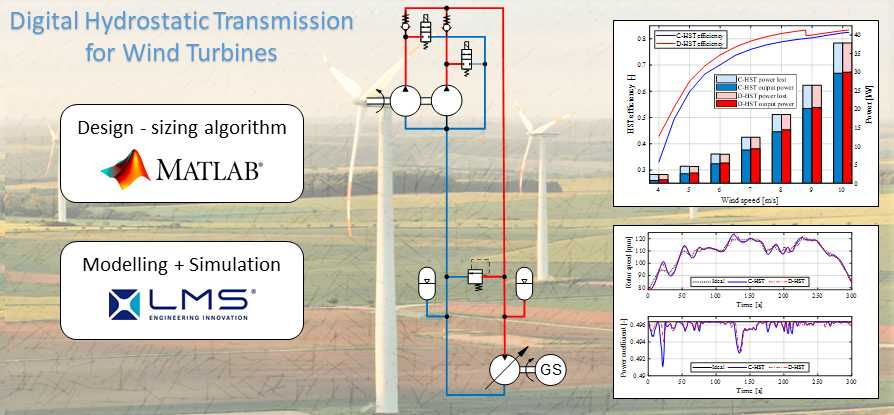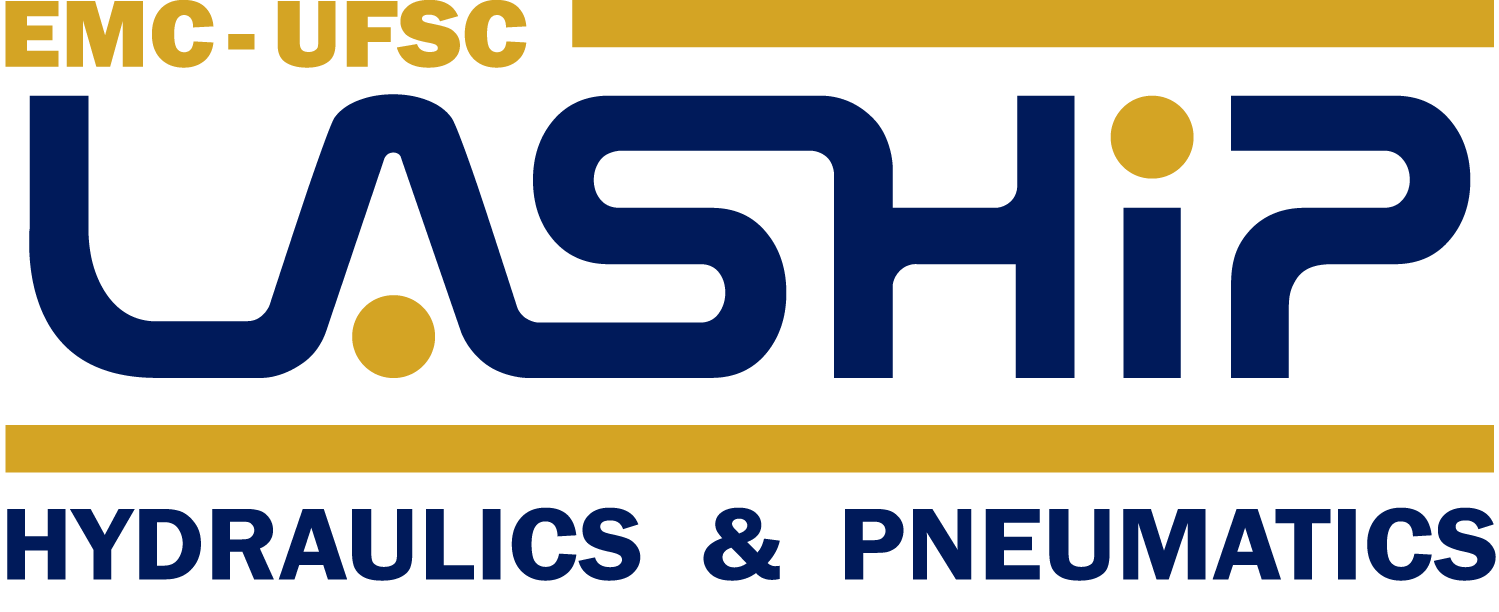Candidate: Lucas Zanatta Manosso 
Program: UFSC / POSMEC
Date: November, 2021
Advisor: Victor Juliano De Negri
Abstract: Hydrostatic transmission (HST) has proved to be a feasible and an interesting solution for wind turbine application. However, there is still room for improvements regarding the energy efficiency. Digital fluid power technology is an interesting solution for improving hydraulic systems efficiency throughout the operating range. This thesis presents the design, modelling and simulation of a digital HST for wind turbines using fixed and variable displacement components. It is noted the lack of such studies in the literature. A sizing algorithm is developed using real efficiency data, in order to optimize the selection of components and set the most energy efficient configuration. The design of a digital HST for a 28.5 kW wind turbine is carried out. Considering the use of one generator, the best HST configuration is set with two fixed pumps and one variable motor. It is developed a controller for the on-off valves of the digital pump. The current computational model is modified according to the new designed system. The performances of conventional and the digital HSTs are compared, in order to in order to identify the pros and cons of each one. A steady-state analysis shows the digital HST is 3% in average more efficient and at partial load operation the difference reaches up to 10%. This difference tends to increase even more for bigger wind turbines, since the lower availability of bigger pumps in the market increases the chance of the conventional HST be oversized. Dynamic simulations are performed considering a realistic wind profile, concluding that the digital HST is able to control the ideal rotor speed. However, the digital pump behaviour causes pressure peaks, producing generator frequency oscillations. Nevertheless, the frequency deviations stay under the grid regulations. A further experimental validation is needed, in order to prove the system designed..
Reference: MANOSSO, Z. L. Design and analysis of a digital hydrostatic transmission for wind turbines. 2021. 142 p. Dissertation (Master) – Course of Mechanical Engineering, Department, LASHIP, Federal University of Santa Catarina, Florianópolis, 2021.



